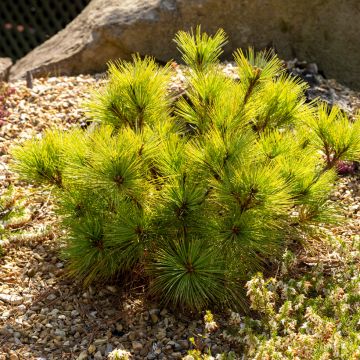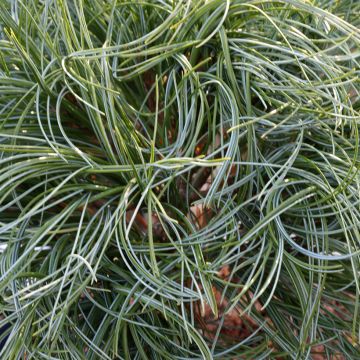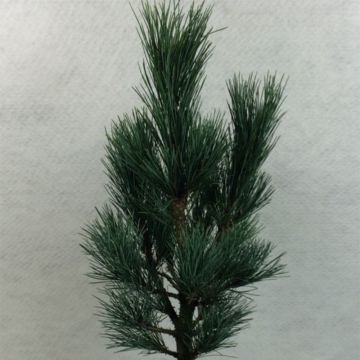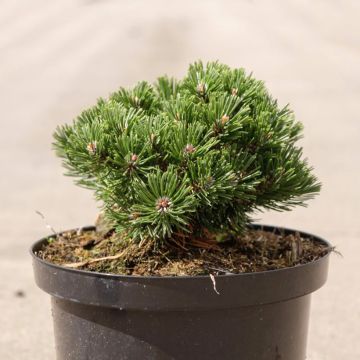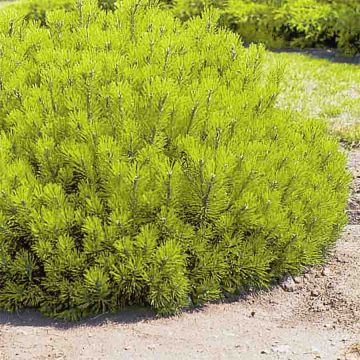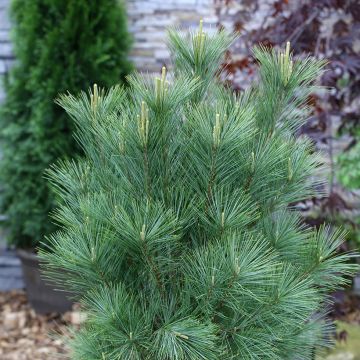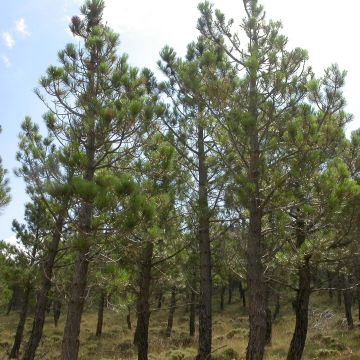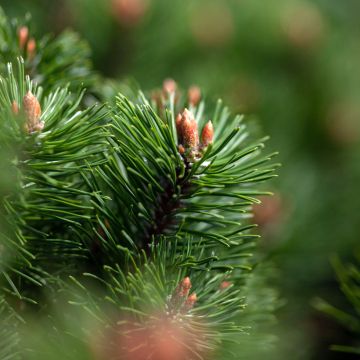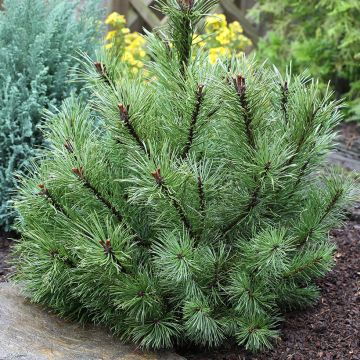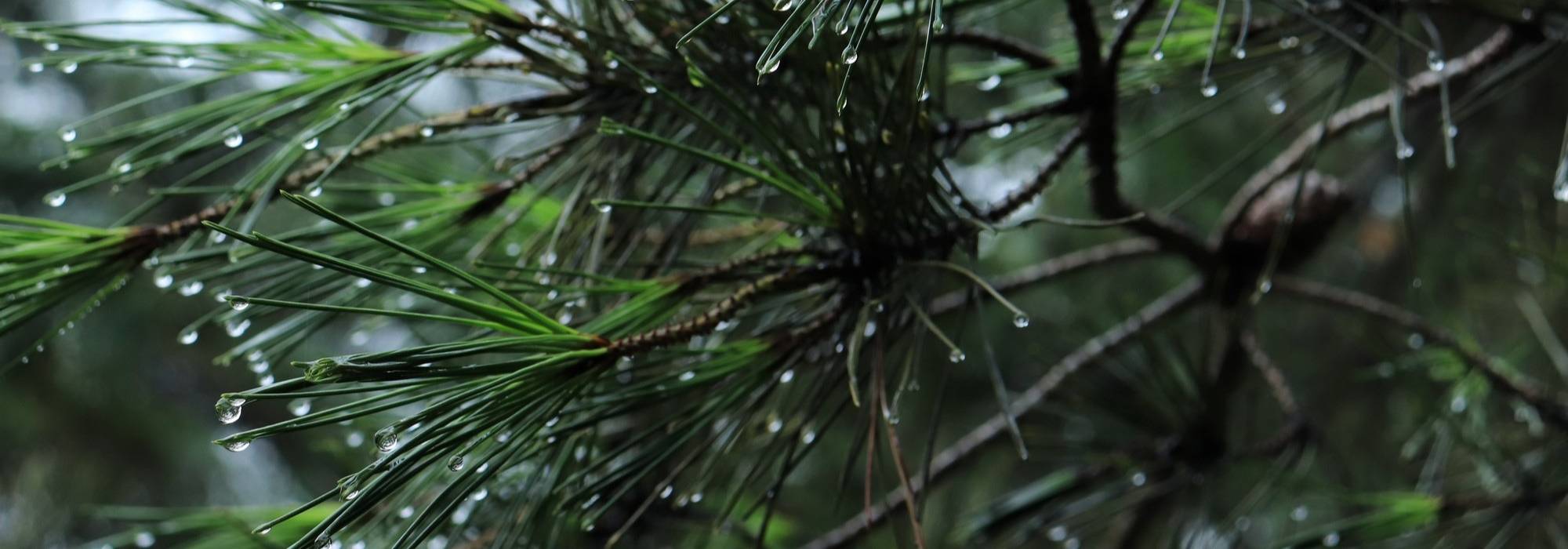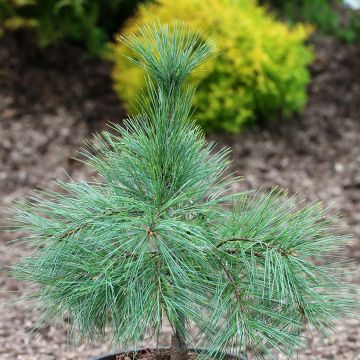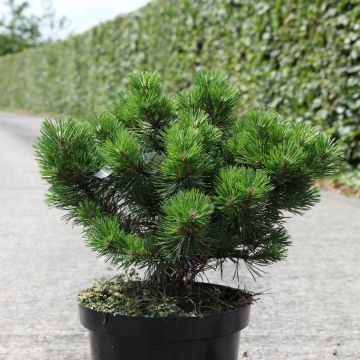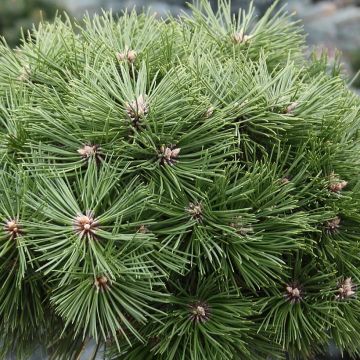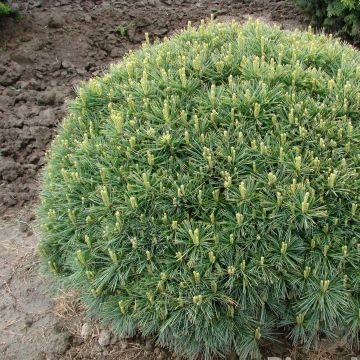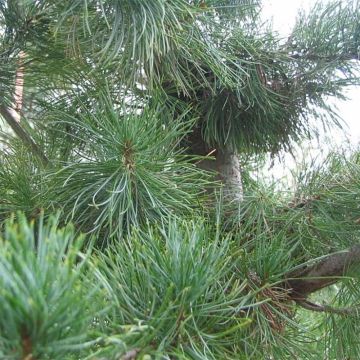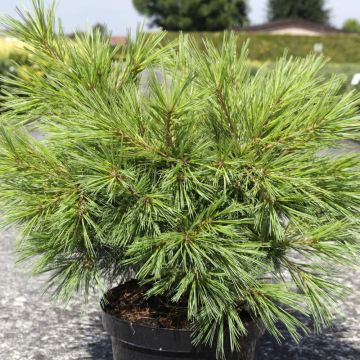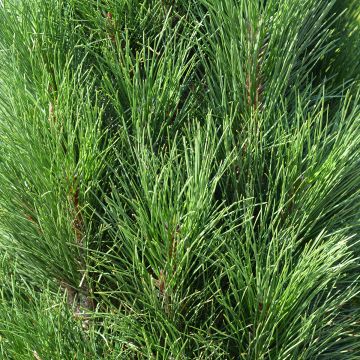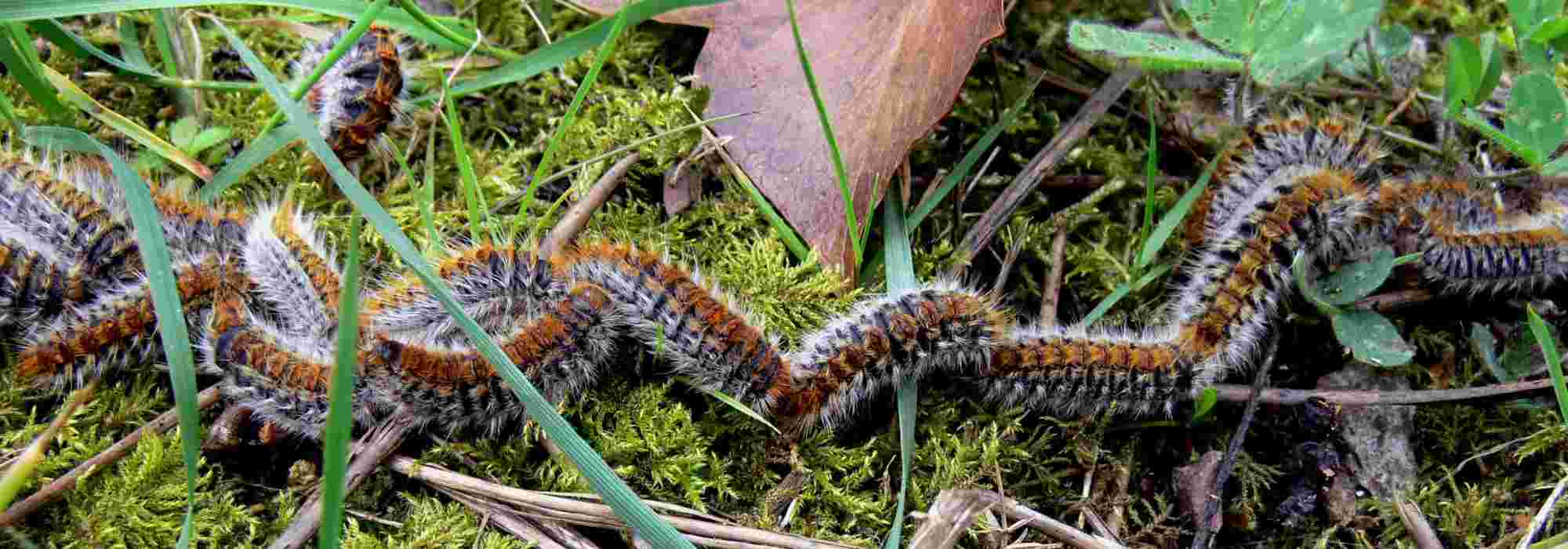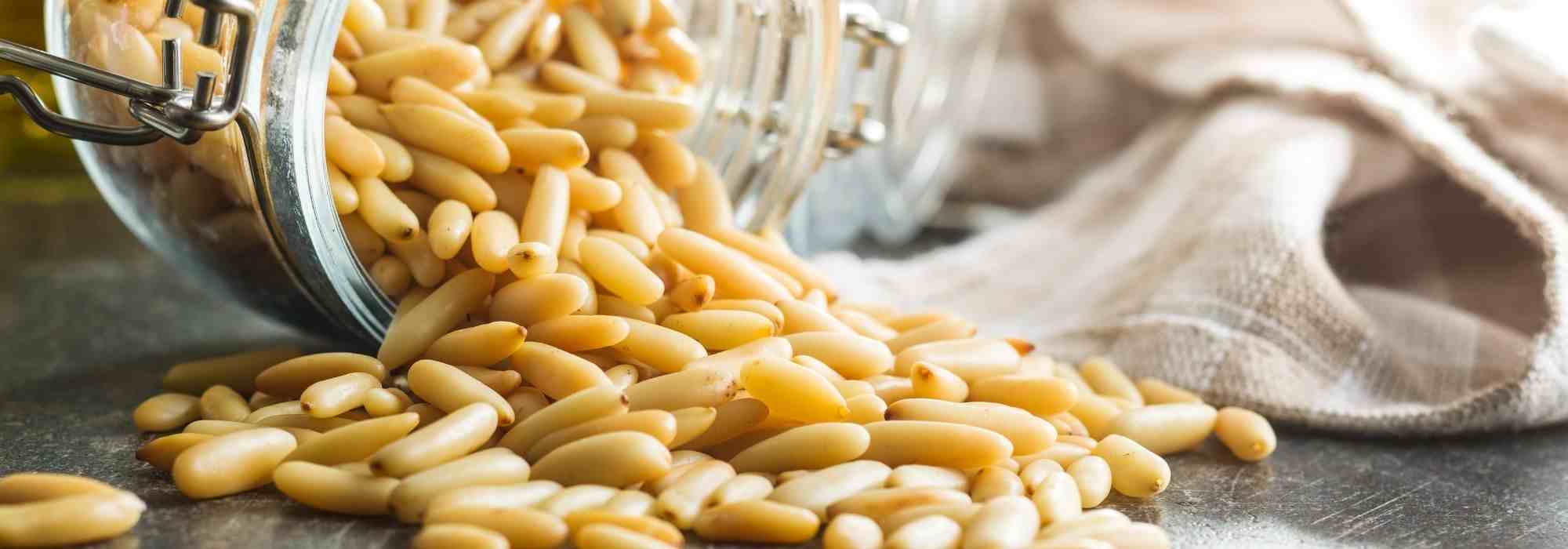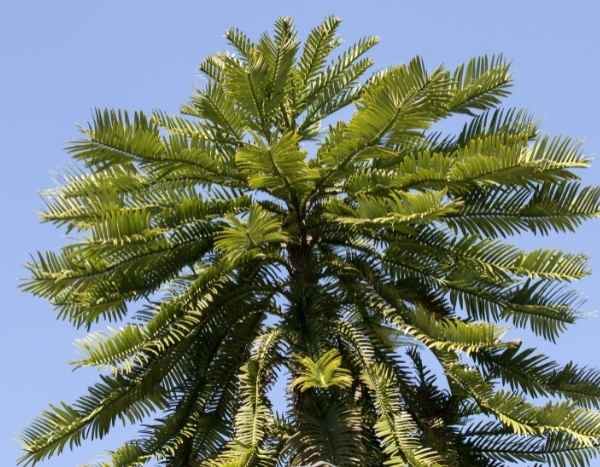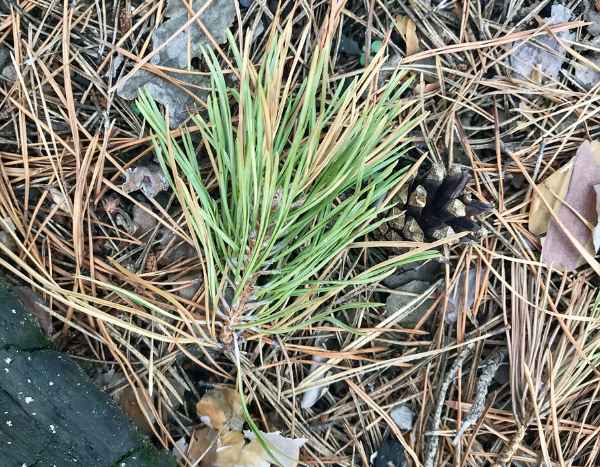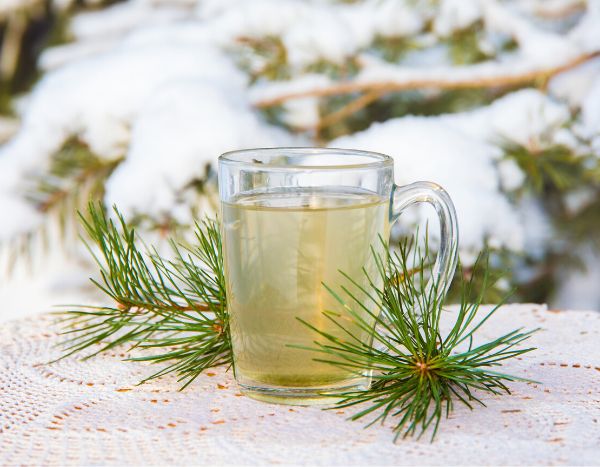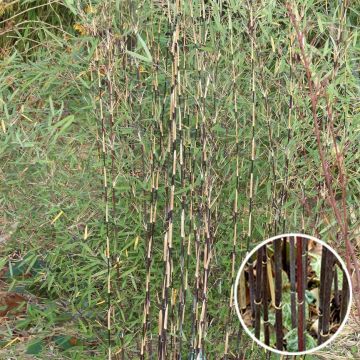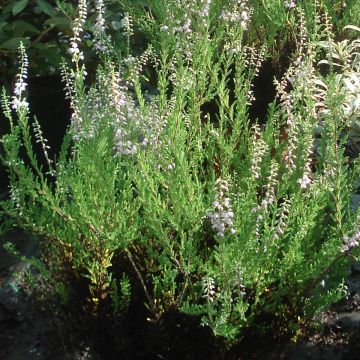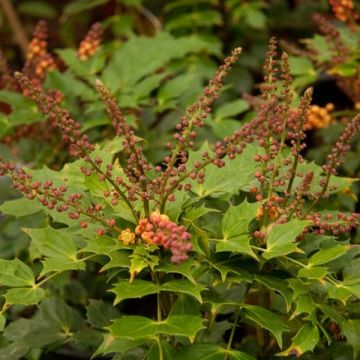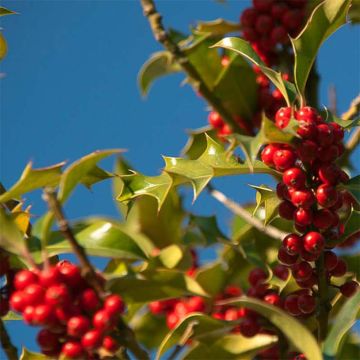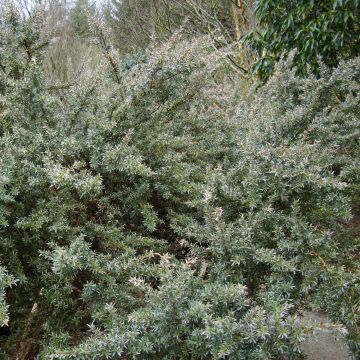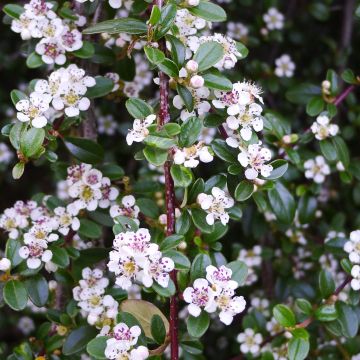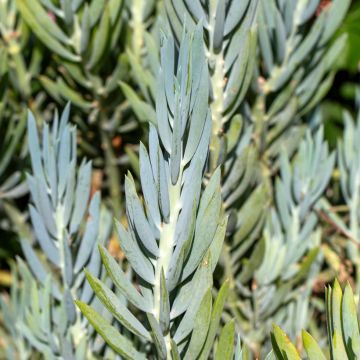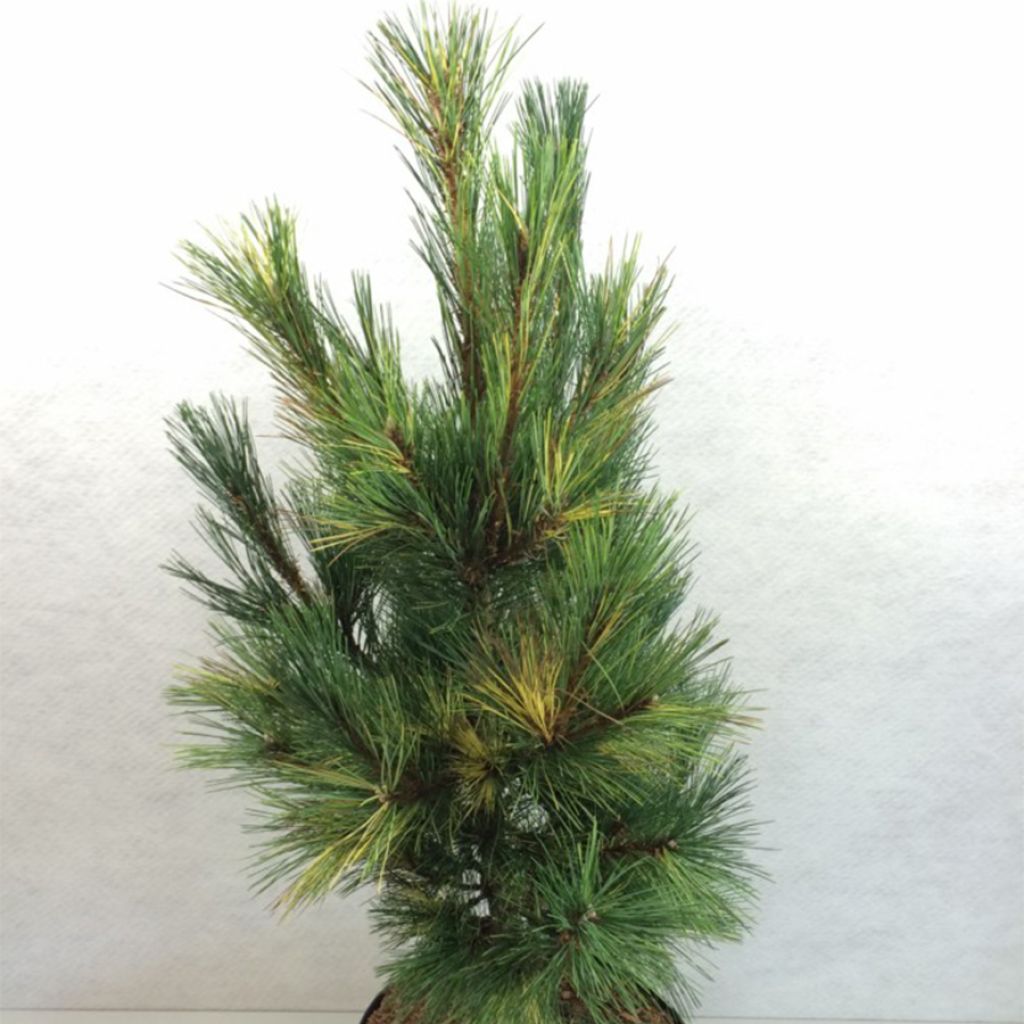

Pinus peuce Aureovariegata - Pin de Macédoine
Pinus peuce Aureovariegata - Macedonian Pine
Pinus peuce Aureovariegata
Macedonian Pine, Balkan Pine
Special offer!
Receive a €20 voucher for any order over €90 (excluding delivery costs, credit notes, and plastic-free options)!
1- Add your favorite plants to your cart.
2- Once you have reached €90, confirm your order (you can even choose the delivery date!).
3- As soon as your order is shipped, you will receive an email containing your voucher code, valid for 3 months (90 days).
Your voucher is unique and can only be used once, for any order with a minimum value of €20, excluding delivery costs.
Can be combined with other current offers, non-divisible and non-refundable.
Why not try an alternative variety in stock?
View all →This plant carries a 24 months recovery warranty
More information
We guarantee the quality of our plants for a full growing cycle, and will replace at our expense any plant that fails to recover under normal climatic and planting conditions.
Would this plant suit my garden?
Set up your Plantfit profile →
Description
Pinus peuce 'Aureovariegata', a variety of Macedonian Pine, is a small conifer with slow but regular growth, which shows an elegant, pyramidal and then more conical habit, supported by initially horizontal branches that straighten over time. Its very bright, variegated foliage of gold and grey-green, is composed of long needles, while its smooth, brown-grey bark exfoliates on mature subjects. It is perfect for small spaces, whether isolated or in a mass planting, and in a large rockery. This very hardy species adapts to any well-drained and moist soil, to a sunny exposure, and withstands wind very well.
Pinus peuce, also called Balkan Pine, is part of the group of white pines, like Pinus strobus. It is a plant of the Pinaceae family native to mountainous areas of Albania, Macedonia, Bulgaria and northern Greece. In its natural environment, at an altitude between 600 and 2,200m (1968 and 7000ft), this species exceeds 25m (82ft) in height. In cultivation, it will reach about 20m (66ft) in height and 6m (20ft) in width, with a rather slow growth.
The cultivar 'Aureovariegata' distinguishes itself by its very small size and beautiful variegated foliage. Its growth of about 10cm (4in) per year, slowing down a little each year, will slowly reach a height of 2m (7ft) and a width of 1.2m (4ft). Its bark, brown-grey and smooth, exfoliates over the years. Its young branches are shiny grey-green, then they become brown-grey. The needles, golden or green, rather thick, 5 to 8cm (2 to 3in) long, develop at their ends, grouped in fives, arranged in tufts, and radially attached around the branches.
Easy to grow and not very demanding in terms of soil, the Macedonian Pine 'Aureovariegata' is a conifer that does not require pruning, suitable for small spaces. It will find its place in a small garden, from north to south (not too dry) of France, as its mountain origins do not prevent it from flourishing under very different climates. It will look good as a solitary plant, or planted in groups of 3 near an entrance, or animate a large rockery. It goes well with large stones, the geometric lines of swimming pools and masonry works. It can be associated with prostrate dwarf conifers (Juniperus horizontalis 'Blue Chip'), globular (Picea abies 'Little Gem'), or columnar (Juniperus communis 'Sentinel'). The real graphic qualities of conifers naturally impose themselves in the design of a contemporary garden. These living plants, with their reassuring permanence, structurally and durably shape a flowerbed, mark the paths, border the terrace, easily replacing the strong presence of trimmed boxwood or holly. The key is to play with volumes and colours.
Pinus peuce Aureovariegata - Macedonian Pine in pictures
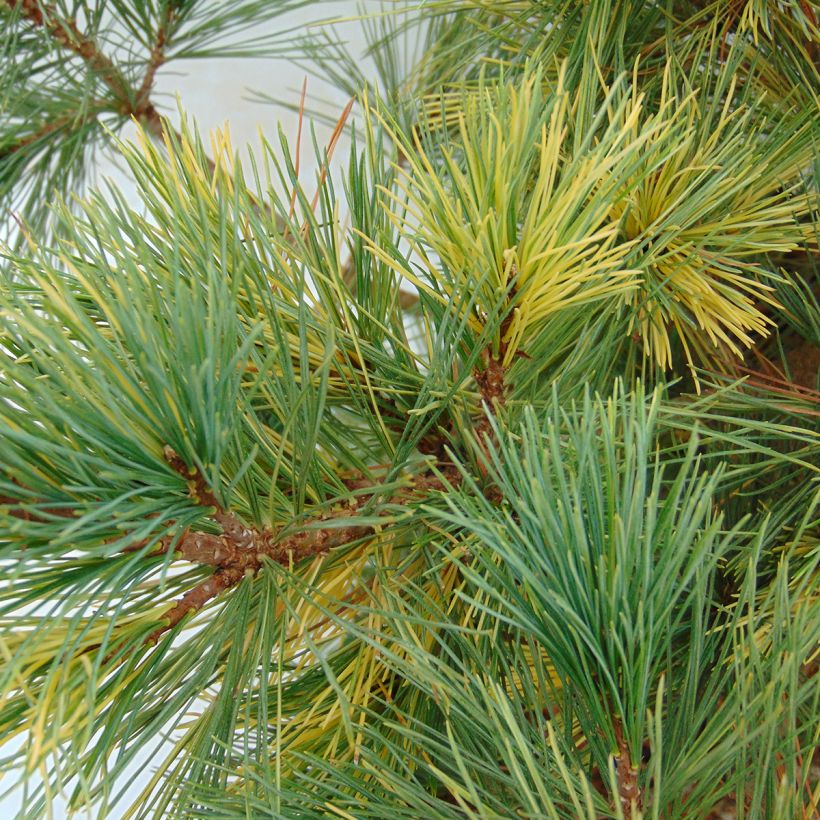

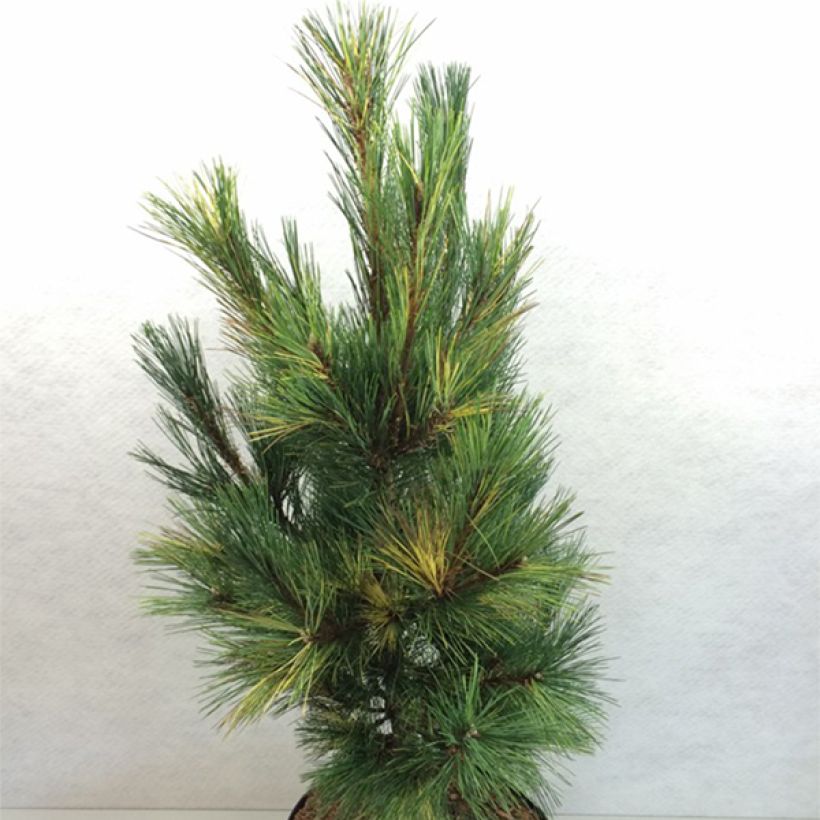

Plant habit
Foliage
Botanical data
Pinus
peuce
Aureovariegata
Pinaceae
Macedonian Pine, Balkan Pine
Cultivar or hybrid
Other Pinus - Pine
View all →Planting and care
Pinus peuce 'Aureovariegata' can be planted from September to November and from February to June in ordinary soil, even poor, even clayey or limestone, but well-drained and retaining moisture. Choose a sunny location or, at most, partially shaded in a hot climate. Soak the roots well before planting. Add organic amendment at planting and water generously in the first few years, and in case of prolonged drought. Apply a special conifer fertilizer every year in April and cultivate the soil in summer. This very hardy conifer (up to -20°C (1°F) at least) is not afraid of wind, but it fears waterlogged soils in winter. Pruning is not necessary.
Planting period
Intended location
Care
Planting & care advice
This item has not been reviewed yet - be the first to leave a review about it.
Similar products
Haven't found what you were looking for?
Hardiness is the lowest winter temperature a plant can endure without suffering serious damage or even dying. However, hardiness is affected by location (a sheltered area, such as a patio), protection (winter cover) and soil type (hardiness is improved by well-drained soil).

Photo Sharing Terms & Conditions
In order to encourage gardeners to interact and share their experiences, Promesse de fleurs offers various media enabling content to be uploaded onto its Site - in particular via the ‘Photo sharing’ module.
The User agrees to refrain from:
- Posting any content that is illegal, prejudicial, insulting, racist, inciteful to hatred, revisionist, contrary to public decency, that infringes on privacy or on the privacy rights of third parties, in particular the publicity rights of persons and goods, intellectual property rights, or the right to privacy.
- Submitting content on behalf of a third party;
- Impersonate the identity of a third party and/or publish any personal information about a third party;
In general, the User undertakes to refrain from any unethical behaviour.
All Content (in particular text, comments, files, images, photos, videos, creative works, etc.), which may be subject to property or intellectual property rights, image or other private rights, shall remain the property of the User, subject to the limited rights granted by the terms of the licence granted by Promesse de fleurs as stated below. Users are at liberty to publish or not to publish such Content on the Site, notably via the ‘Photo Sharing’ facility, and accept that this Content shall be made public and freely accessible, notably on the Internet.
Users further acknowledge, undertake to have ,and guarantee that they hold all necessary rights and permissions to publish such material on the Site, in particular with regard to the legislation in force pertaining to any privacy, property, intellectual property, image, or contractual rights, or rights of any other nature. By publishing such Content on the Site, Users acknowledge accepting full liability as publishers of the Content within the meaning of the law, and grant Promesse de fleurs, free of charge, an inclusive, worldwide licence for the said Content for the entire duration of its publication, including all reproduction, representation, up/downloading, displaying, performing, transmission, and storage rights.
Users also grant permission for their name to be linked to the Content and accept that this link may not always be made available.
By engaging in posting material, Users consent to their Content becoming automatically accessible on the Internet, in particular on other sites and/or blogs and/or web pages of the Promesse de fleurs site, including in particular social pages and the Promesse de fleurs catalogue.
Users may secure the removal of entrusted content free of charge by issuing a simple request via our contact form.
The flowering period indicated on our website applies to countries and regions located in USDA zone 8 (France, the United Kingdom, Ireland, the Netherlands, etc.)
It will vary according to where you live:
- In zones 9 to 10 (Italy, Spain, Greece, etc.), flowering will occur about 2 to 4 weeks earlier.
- In zones 6 to 7 (Germany, Poland, Slovenia, and lower mountainous regions), flowering will be delayed by 2 to 3 weeks.
- In zone 5 (Central Europe, Scandinavia), blooming will be delayed by 3 to 5 weeks.
In temperate climates, pruning of spring-flowering shrubs (forsythia, spireas, etc.) should be done just after flowering.
Pruning of summer-flowering shrubs (Indian Lilac, Perovskia, etc.) can be done in winter or spring.
In cold regions as well as with frost-sensitive plants, avoid pruning too early when severe frosts may still occur.
The planting period indicated on our website applies to countries and regions located in USDA zone 8 (France, United Kingdom, Ireland, Netherlands).
It will vary according to where you live:
- In Mediterranean zones (Marseille, Madrid, Milan, etc.), autumn and winter are the best planting periods.
- In continental zones (Strasbourg, Munich, Vienna, etc.), delay planting by 2 to 3 weeks in spring and bring it forward by 2 to 4 weeks in autumn.
- In mountainous regions (the Alps, Pyrenees, Carpathians, etc.), it is best to plant in late spring (May-June) or late summer (August-September).
The harvesting period indicated on our website applies to countries and regions in USDA zone 8 (France, England, Ireland, the Netherlands).
In colder areas (Scandinavia, Poland, Austria...) fruit and vegetable harvests are likely to be delayed by 3-4 weeks.
In warmer areas (Italy, Spain, Greece, etc.), harvesting will probably take place earlier, depending on weather conditions.
The sowing periods indicated on our website apply to countries and regions within USDA Zone 8 (France, UK, Ireland, Netherlands).
In colder areas (Scandinavia, Poland, Austria...), delay any outdoor sowing by 3-4 weeks, or sow under glass.
In warmer climes (Italy, Spain, Greece, etc.), bring outdoor sowing forward by a few weeks.






























